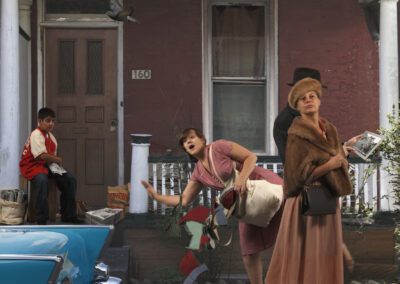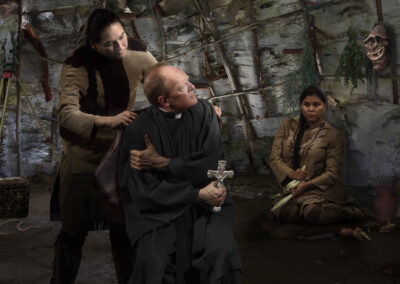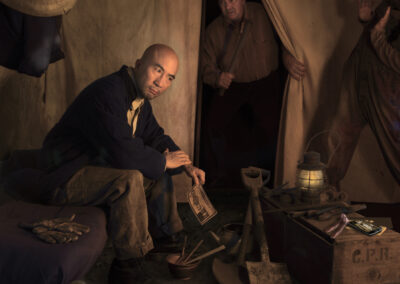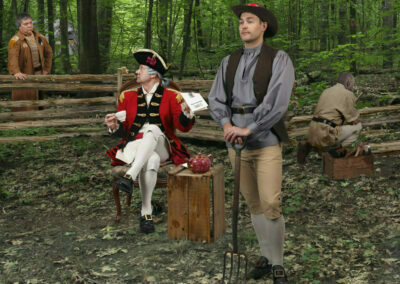200 Boulevard René-Lévesque O, Montréal, QC H2Z 1X4
Biography
Over the past four decades, Carole Condé and Karl Beveridge have collaborated with various trade unions and community organizations in the production of their staged photographic work. Their work has been exhibited across Canada and internationally in both the trade union movement and art galleries and museums, including Museo Reina Sofía (Madrid, Spain), Art Gallery of Ontario (Toronto), Bienal do Mercusol (Porto Alegre, Brasil) and more. They have been active in several labour arts initiatives including the founding of the Mayworks Festival (Toronto) and the Workers Arts and Heritage Centre (Hamilton, ON). They received numerous awards and honours including the Min Sook Lee Mayworks award for outstanding contribution to labour (2014), the Prix de mérite artistique from UQAM (2013), Honorary Doctorate from NSCAD University (2015) and OCAD University (2010).
Carole Condé and Karl Beveridge received this year the Governor General’s Awards in Visual and Media Arts from the Canada Council for the Arts.
Approach and works on display
Working in collaboration with various labour and community organizations to develop their work, Carol Condé and Karl Beveridge continue to create their staged photographic work that has become their signature style. Often with references to historical events or figures, their staged tableaux provide critical insights into socio-political situations and put forward pressing issues of our time, such as cultural and social stigma, class struggle, the gendered division of labour and socio-environmental impact of globalization. Furthermore, through their highly staged visual narratives, the duo aims to bridge between two audiences, working people and those in the arts, in order to foster dialogues and close their perception gap.
Know Your Place (2010-ongoing)
Know Your Place is an ongoing project on the history of immigration to Canada. While many immigrants found a “land of opportunity” they were also exploited and discriminated against by previous groups of immigrants and the settler elites.
– 1600s The Mission: First contact: the underpinnings of expropriation and settlement.
– 1780s-90s The Settler: A British administrator is seen granting land, ‘negotiated’ from the Anishinaabe, to a Loyalist from the American War of Independence who were among the first settlers in Upper Canada (Ontario).
– 1830s-40s. The Underground: The image shows the arrival of slaves from the U.S. through the Underground Railroad.
– 1850s The Navvies: Riots on the Welland Canal as Irish Orangemen (Protestants) fought the recently arrived Irish Catholics who worked as navies. (The colonial government used the Coloured Militia to break up the riots.)
– 1885 The Railroad Worker: Thousands of Chinese workers were brought in to complete the Canadian Pacific Railroad through the Canadian Rockies during which many died. Upon its completion, the Canadian government imposed a head tax on Chinese immigrants.
– 1914 The Komagata Maru: The Komagata Maru, carrying Sikh and other South Asian immigrants, was held in Vancouver Harbour and eventually forced to return to India with everyone, except 22 already resident in Canada, on board.
– 1950s The Garment Worker: A large wave of Italian immigrants filled the garment and construction trades to the alarm of many Anglo-Canadian Protestants.
– 2016 The Migrants: Migrant workers are seen getting their passports returned prior to departing from Canada, denying those workers not only their employment rights but also the right to permanently reside where they work.









